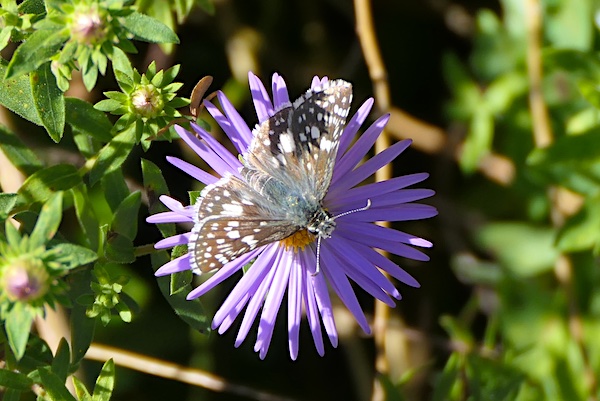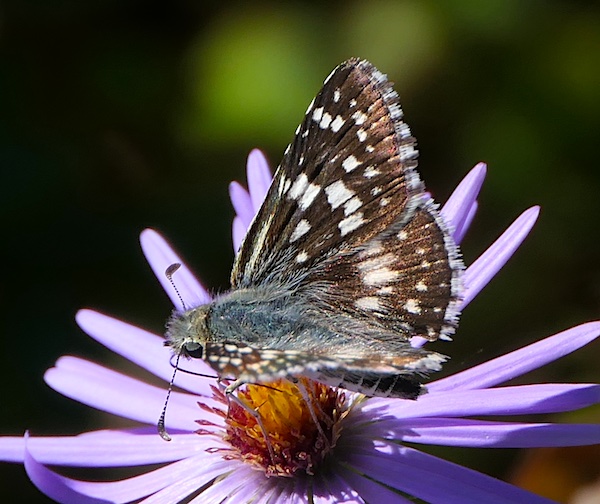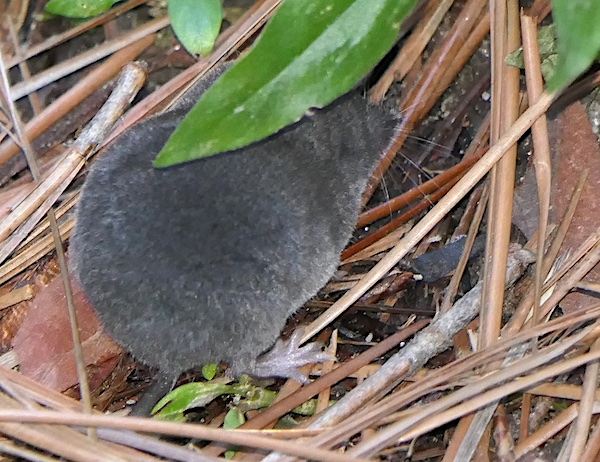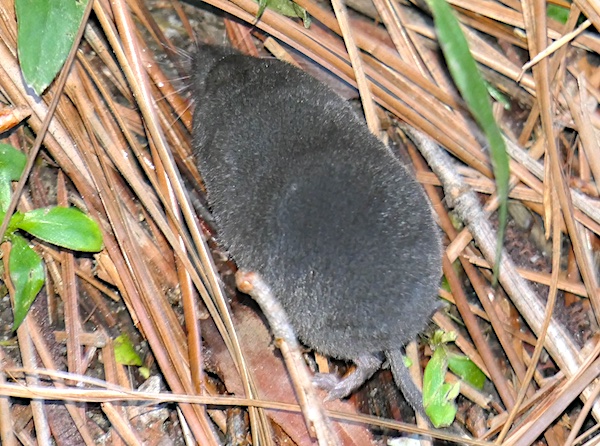Top Photo: Purple aster at the Butterfly House Garden.
Purple aster is a late bloomer. As such, it attracts many late season insects to its nectar like the common checked skipper pictured here. In our area, this skipper may occasionally be seen as late as December, but certainly into mid November.



As I walked into Catch the Wind, I noticed a group of about eight people smiling and laughing as they stared down at the ground near the base of a scarlet oak tree at the entrance to Earth Moves. I approached them to see what was so amusing. What had grabbed them was a trio of tiny mammals having some sort of interaction down among the pine straw mulch off to the side of the path.
As soon as I saw the creatures I knew they were shrews, short-tailed shrews. I hadn’t seen one here at the museum in a couple of years, but there they were, close-cropped black fur from head to toe, tiny eyes, and a short, gray tail.

Shrews are frenetic little beasts, sitting still for only short periods. With a heart rate of about 800 bpm it’s no wonder. They’re constantly on the move.
Shrews produce venom in their salivary glands. I’ve read that their bite may be painful to humans. However, the venom’s purpose is to kill or at least immobilize hard to handle prey rather than hurt us. Encounters with shrews are infrequent so I wouldn’t worry about getting bitten. Besides, a shrew has to gnaw on whatever it has bitten in order to introduce venom into the wound. It is not injected as, say, with fangs in the manner of venomous snakes. Of course, with as rapid a heart rate as they have, everything happens quickly in their lives. They can probably get the venom flowing in a hurry.

I’m not sure if our friends pictured here are northern short-tailed shrews or southern short-tailed shrews. Both are said to occur here on the Piedmont. Whatever species, it’s always a joy to witness a shrew going about its business.
Ranger Greg